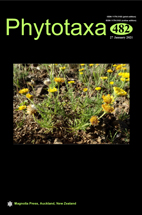Abstract
A new hypogeous species, Choiromyces cerebriformis sp. nov. is described and illustrated from Yunnan province, China. Both morphological evidence and sequence analyses of the internal transcribed spacer region (ITS1-5.8S-ITS2) support the species as new to science. C. cerebriformis differs from other Choiromyces species in having ascomata with larger lobes and light orange-brown gleba, and globose ascospores with short stick-like sparse spines ornamentation. Morphological differences and genetic distances with the similar species C. helanshanensis and C. alveolatus are discussed. A phenotypic key including related species is provided.

